AN ADDITIONAL SET OF POSTCARDS OF OLD LONDON
BY
DAVE HILL
-oOo-
THE EMBANKMENT
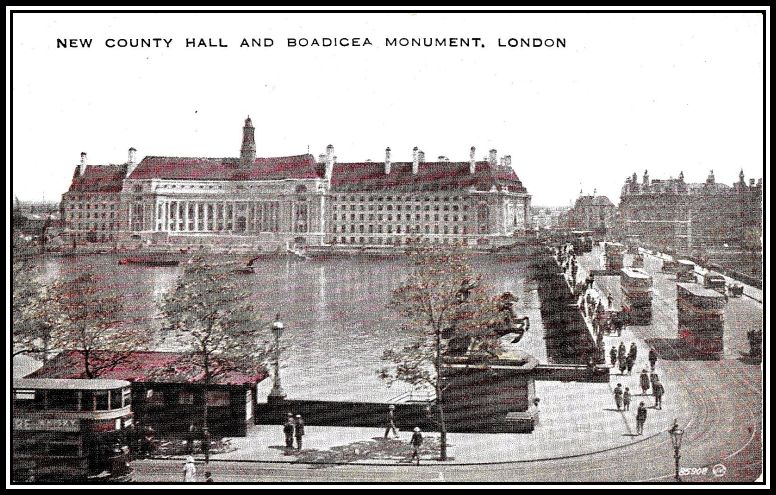 Westminster Bridge & The Statue of Queen Boadicea & County Hall at the start of the Victoria Embankment
Westminster Bridge & The Statue of Queen Boadicea & County Hall at the start of the Victoria Embankment
-oOo-
The Dictionary defines the word Embankment as a wall or bank of earth or stone built to prevent a body of water from flooding an area (i.e. as in levee or dyke). Embankment may also be defined as a bank of earth or stone built to carry a road or railway line over an area of low ground or wet area.
Top Left: Geronimo & other Chiricahua Apaches seated on an embankment during their journey to a Reservation; Bottom Right: the embankment between Pagham Lagoon & Harbour; the remainder are of train embankments
The word Causeway is also used to describe a raised road or track across low or wet ground.
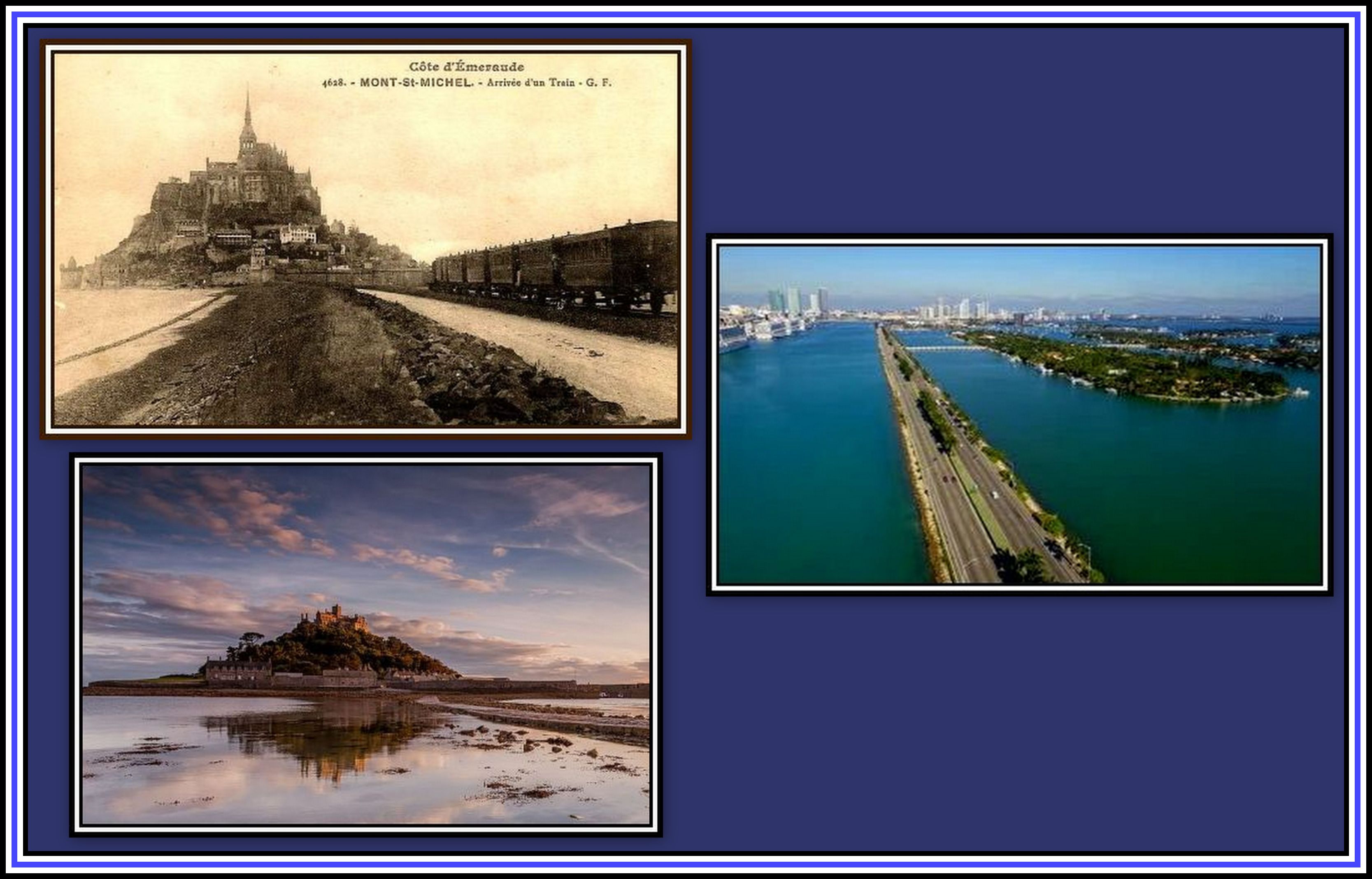 Top Left: The Causeway to Mont St. Michel, Normondy; Bottom Left: The Causeway to St. Michael’s Mount, Cornwall; Right: MacArthur Causeway, Miami Beach
Top Left: The Causeway to Mont St. Michel, Normondy; Bottom Left: The Causeway to St. Michael’s Mount, Cornwall; Right: MacArthur Causeway, Miami Beach
-oOo-
The Thames Embankment was built on reclaimed marshy land adjacent to the River Thames and comprises three distinct areas: the Victoria and Chelsea Embankment on the North Bank and the Albert Embankment on the South Bank.
Although there had been a number of proposals to build embankments along the course of the Thames through London, including one by Sir Christopher Wren (1632-1723) in the 1660s, none were taken up until 1854 when the Government built the Chelsea Embankment between Millbank and the Royal Hospital Chelsea on the North Bank, which was undertaken by the Metropolitan Board of Works (1855-1889) under the direction of Thomas Brassey (1805-1870).
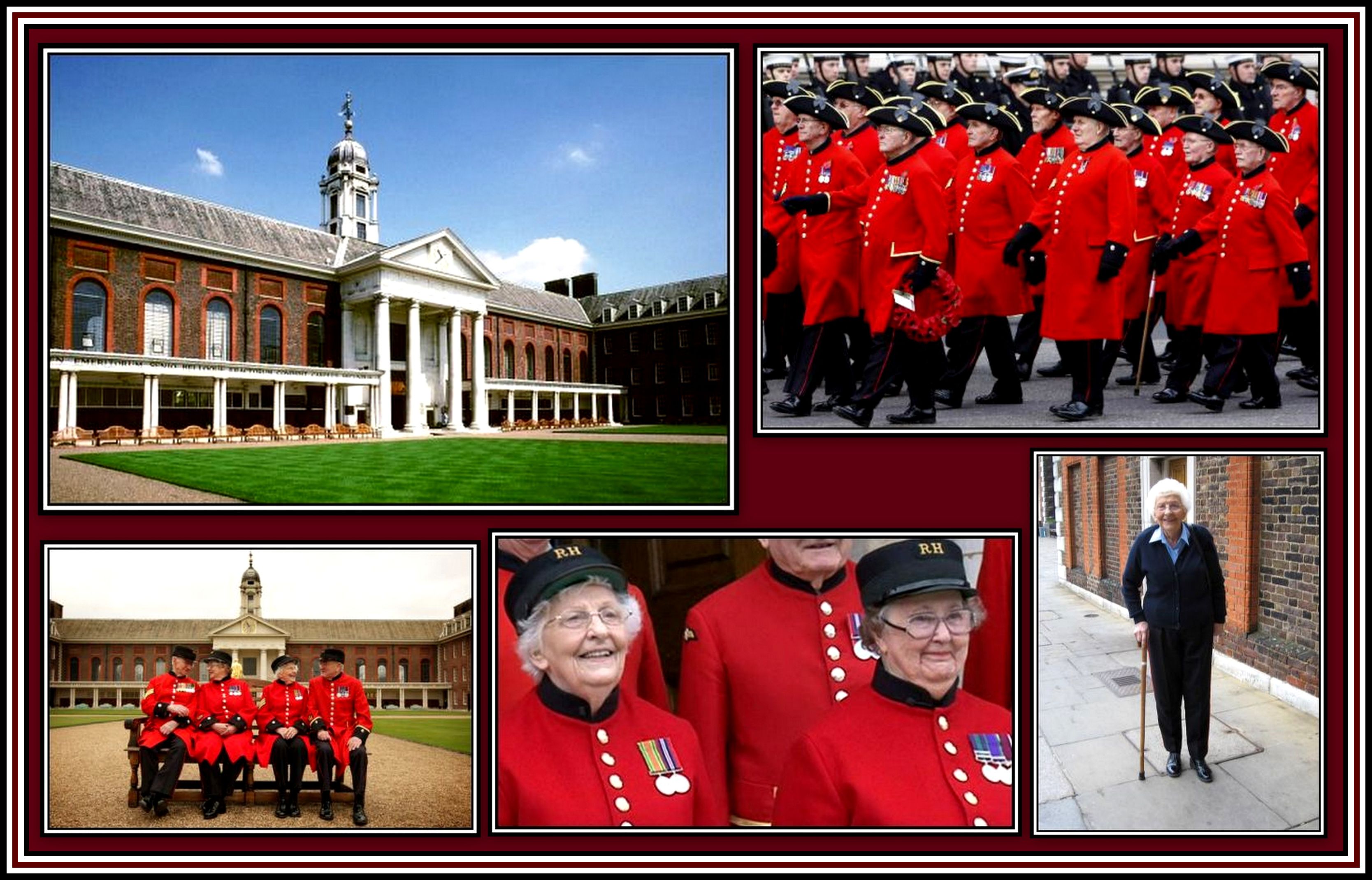 Royal Chelsea Hospital, founded in 1682 by Charles II as a retreat for Veterans; the hospital was designed by Sir Christopher Wren and was inspired by Les Invalides in Paris; women pensioners were first admitted in March 2009 with Ms Dorothy Hughes (bottom right) being the first
Royal Chelsea Hospital, founded in 1682 by Charles II as a retreat for Veterans; the hospital was designed by Sir Christopher Wren and was inspired by Les Invalides in Paris; women pensioners were first admitted in March 2009 with Ms Dorothy Hughes (bottom right) being the first
The remainder of the Thames Embankment consists of:
- the Victoria Embankment, built between 1865 and 1870, and which runs from Big Ben (Elizabeth Tower) and the Houses of Parliament to Blackfriars Bridge in the City of London and
- the Albert Embankment, built between 1866 and 1869, running from Lambeth to Vauxhall on the South Bank. Both of these ventures were constructed under the direction of Sir Joseph Bazalgette (1819-1891).
-oOo-
The impetus for the construction of The Embankment was two-fold: firstly, to provide the growing City with a modern sewerage system; and secondly, to help relieve the congestion of traffic on The Strand and Fleet Street.
During July and August 1858, London suffered what became known as The Great Stink. The City was in the midst of a heat wave, which served to worsen the smell of untreated human waste and industrial effluent that was being dumped on the River’s shores. Charles Dickens (1812-1870) referred to the Thames in his book, Little Dorrit, as a deadly sewer in place of a fine, fresh river.
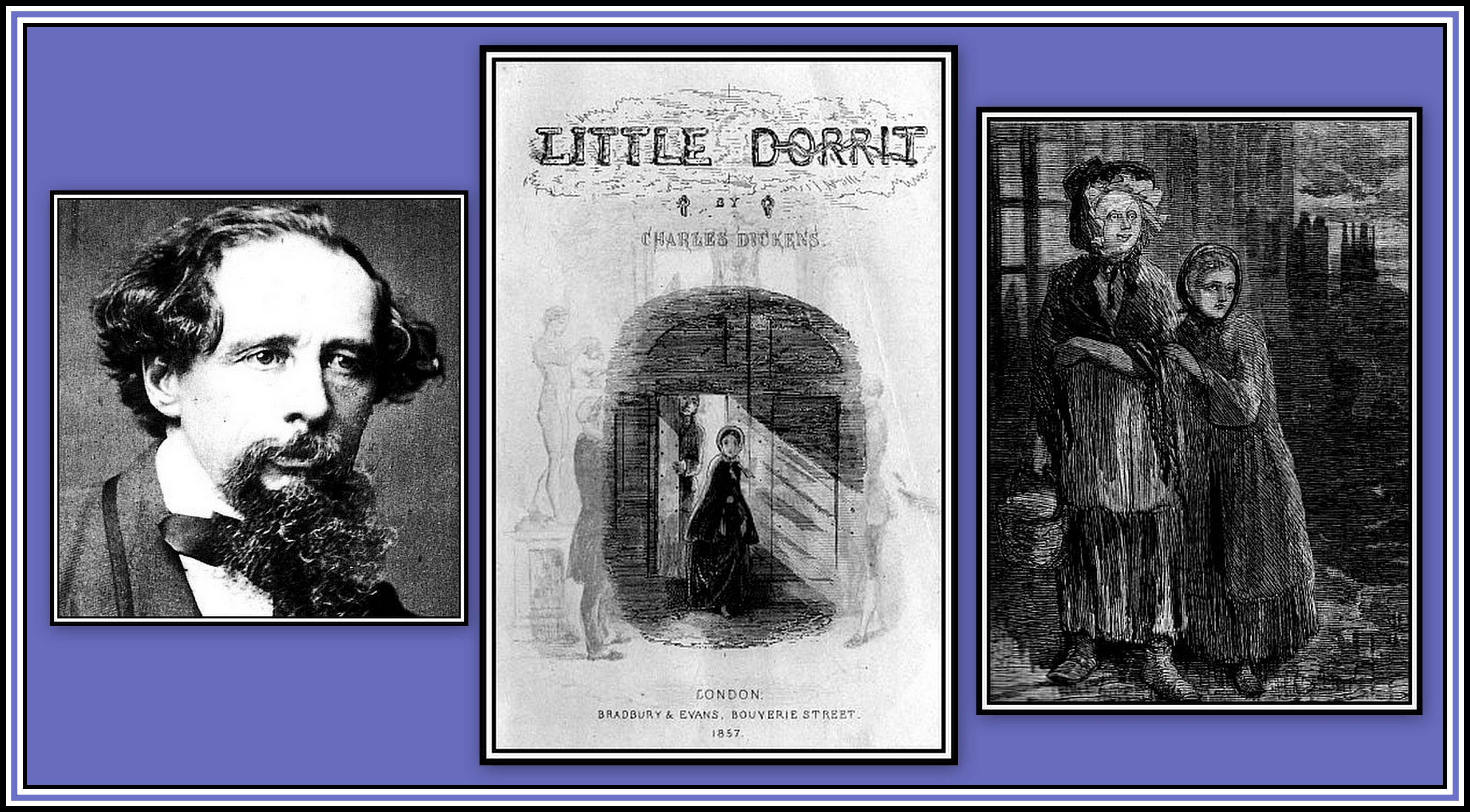 Left: Charles Dickens; Right: Little Dorrit with Maggie
Left: Charles Dickens; Right: Little Dorrit with Maggie
After much discussion, the authorities accepted a proposal from the Joseph Bazalgette to move the City’s effluent eastwards along a series of interconnecting sewers that were to slope towards outfall points where the it could be discharged into the River beyond the metropolitan area. Mr. Bazalgette’s proposal also included the construction of three Embankments to carry the sewer lines to the outfall points.
It was hoped that such a system would bring an end to the Cholera outbreaks that had ravished the City in 1832, 1849 and 1854 (The Broad Street Cholera Outbreak).
At this time, the Miasma Theory was thought to explain the etiology of diseases such as Cholera and Bubonic Plague. Exponents of the Theory believed that the vectors of these diseases were the result of pollution or by a noxious form of bad air.
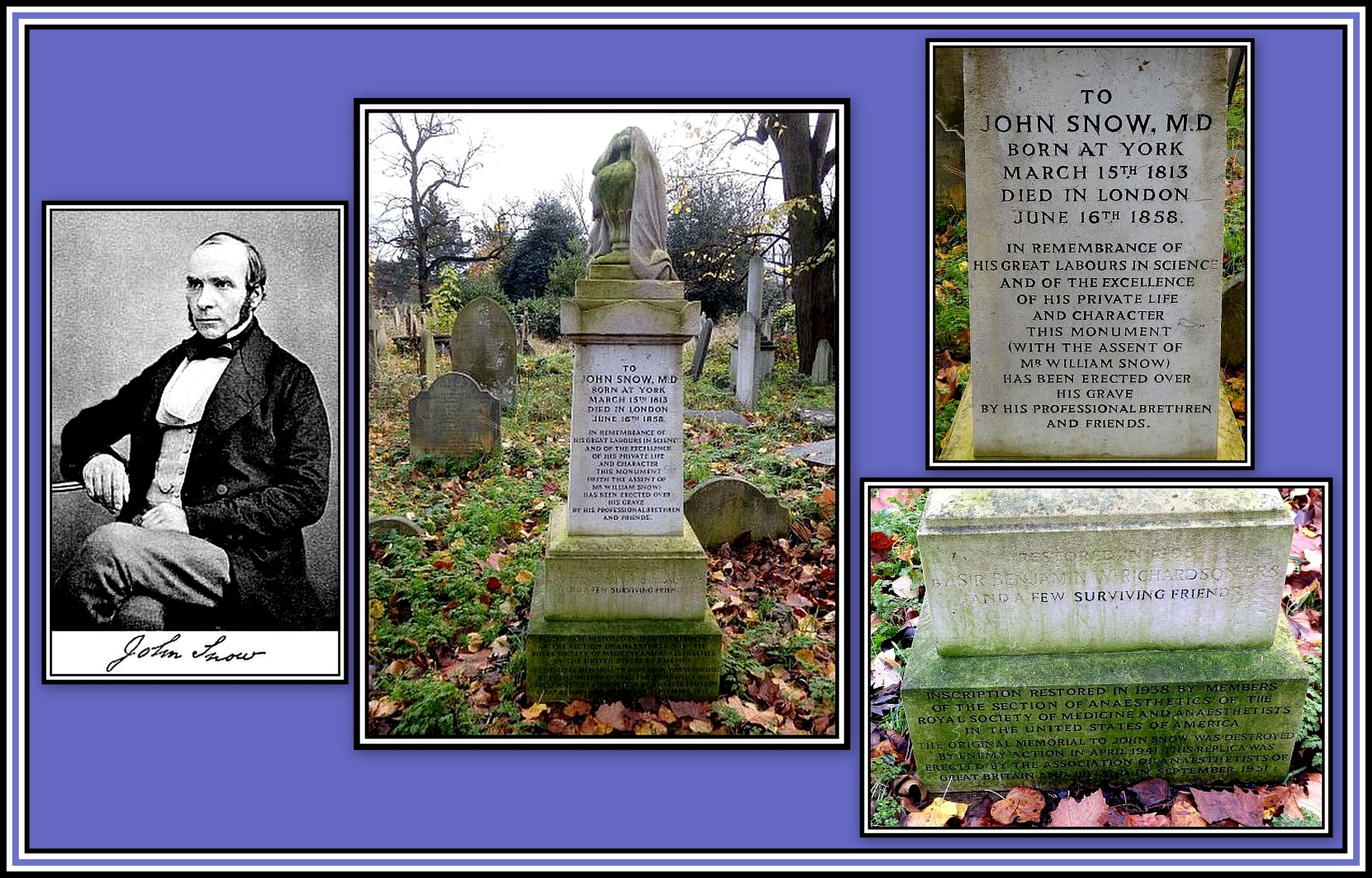 John Snow and his grave at Brompton Cemetery
John Snow and his grave at Brompton Cemetery
John Snow (1813-1858), a physician of some prominence, was a skeptic of the Miasma Theory, and through a number of studies and his investigations of The Broad Street Cholera Outbreak of 1854, he determined that the epidemic was spread through drinking of water contaminated with human waste. He isolated the focus of infection, which proved to be the water pump at Broad (Broadwick) Street, Soho and showed that the Southwark and Vauxhall Waterworks Company was taking water from sewage-polluted sections of the River, which led to an increased incidence of Cholera.
This study of Dr. Snow, with the help of the Reverend Henry Whitehead (1825-1896), proved to be a major event in the history of Public Health and is regarded as the prime event of the science of Epidemiology and has resulted in Dr. Snow becoming known as the Father of Modern Epidemiology.
 Cholera is caused by the Bacterium, Vibrio cholerae
Cholera is caused by the Bacterium, Vibrio cholerae
Despite the work of Dr. Snow, in 1866, Cholera broke out once more in London. It was noted that the epidemic was confined to the East End between Aldgate and Bow and it was soon realised that this part of London was not connected to the Bazalgette sewer system. Investigations showed that the supplier of drinking water to this area, the East London Water Company, was discharging sewage half a mile downstream from its reservoir. Since the River Thames is tidal, the discharged sewage was being carried upstream and into the reservoir by the incoming tide resulting in contamination of the area’s drinking water. This epidemic led to its acceptance that Cholera was a water-borne disease and not transmitted by Miasma. This proved to be the last outbreak of the disease in London to date.
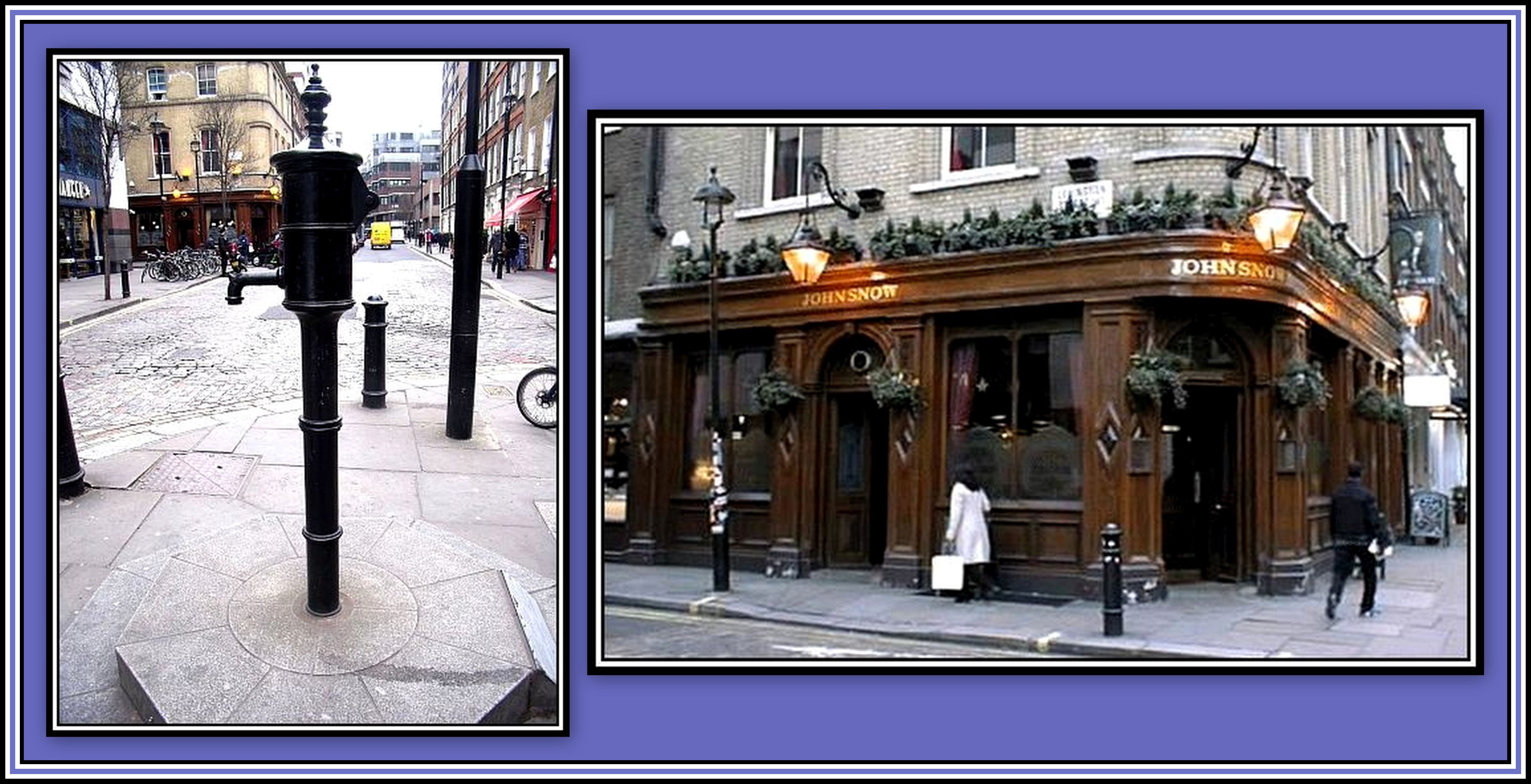 Memorial in the form of a Water Pump to Dr. John Snow at Broadwick (Broad) Street, Soho and the Public House named for him closeby
Memorial in the form of a Water Pump to Dr. John Snow at Broadwick (Broad) Street, Soho and the Public House named for him closeby
-oOo-
In 2010, a plaque was placed in Lambeth to commemorate the Cholera epidemic of 1848-49 and notes the work of Dr. John Snow who had recorded his observations on the cases in his book, On the Mode of Communication of Cholera, published in 1855.
oOo-
Sir Joseph Bazalgette’s foresight and work have provided London with a sewage system that has served the London well, but with the ever increasing population, the system is struggling to cope with the today’s demands.
-oOo-
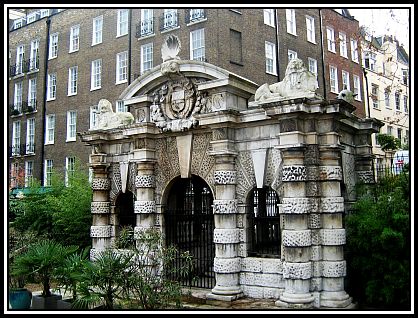 York (Buckingham) Watergate once marked the level of the River Thames
York (Buckingham) Watergate once marked the level of the River Thames
Today, as a result of land reclamation and the building of The Victoria Embankment, The Watergate is now present in Embankment Gardens
Click here to watch a short history of the area
As a result of the construction of the Thames Embankment, the River Thames was narrowed with approximately 89,000 square metres (22 acres) of land being reclaimed.
The embankments were faced with granite brought from Lamorna Gove in Cornwall through the English Channel and up the Thames on barges. Beneath the roadway of the Victoria Embankment, a Cut-and-Cover Tunnel was built to allow passage of the District Railway, part of the London Underground system (and later included trains of the Circle Line), together with part of the sewer system.
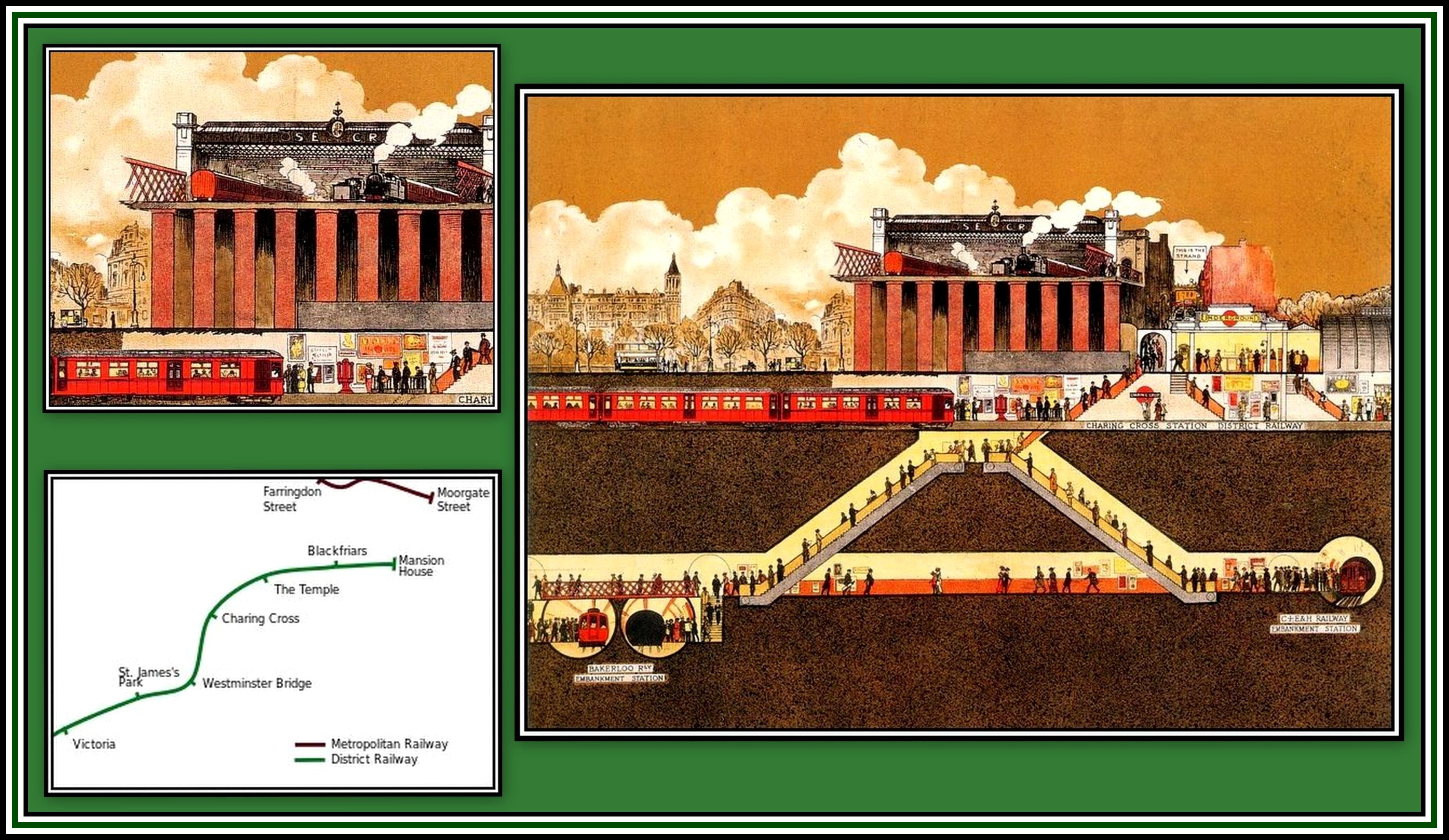 Section of poster, The New Charing Cross, from Underground Electric Railways Company of London Limited advertising the opening of Charing Cross, Euston and Hampstead Railway extension to Charing Cross Underground Station &, Bottom Left, detail of the District Line (1914)
Section of poster, The New Charing Cross, from Underground Electric Railways Company of London Limited advertising the opening of Charing Cross, Euston and Hampstead Railway extension to Charing Cross Underground Station &, Bottom Left, detail of the District Line (1914)
The Victoria Embankment was the most costly to build at an estimated ₤1.26 million together another half million pounds to purchase the adjacent property. It also proved to be the most difficult to construct. Both the cost and time to complete the building were increased as a result of the need to fully test a new type of tool, a Cofferdam, needed to keep water out of the construction area, which was vital due to the tidal nature of the River.
The Victoria Embankment was the first roadway to be permanently lit by electricity in 1878. Lighting was provided by twenty Yablochkov Candles (a type of electric carbon arc lamp), which were powered by a Gramme AC Generator. Eventually, fifty lamps were set up, but the system proved too costly and lighting was returned to gas operation in 1884 until electricity became more competitive in price.
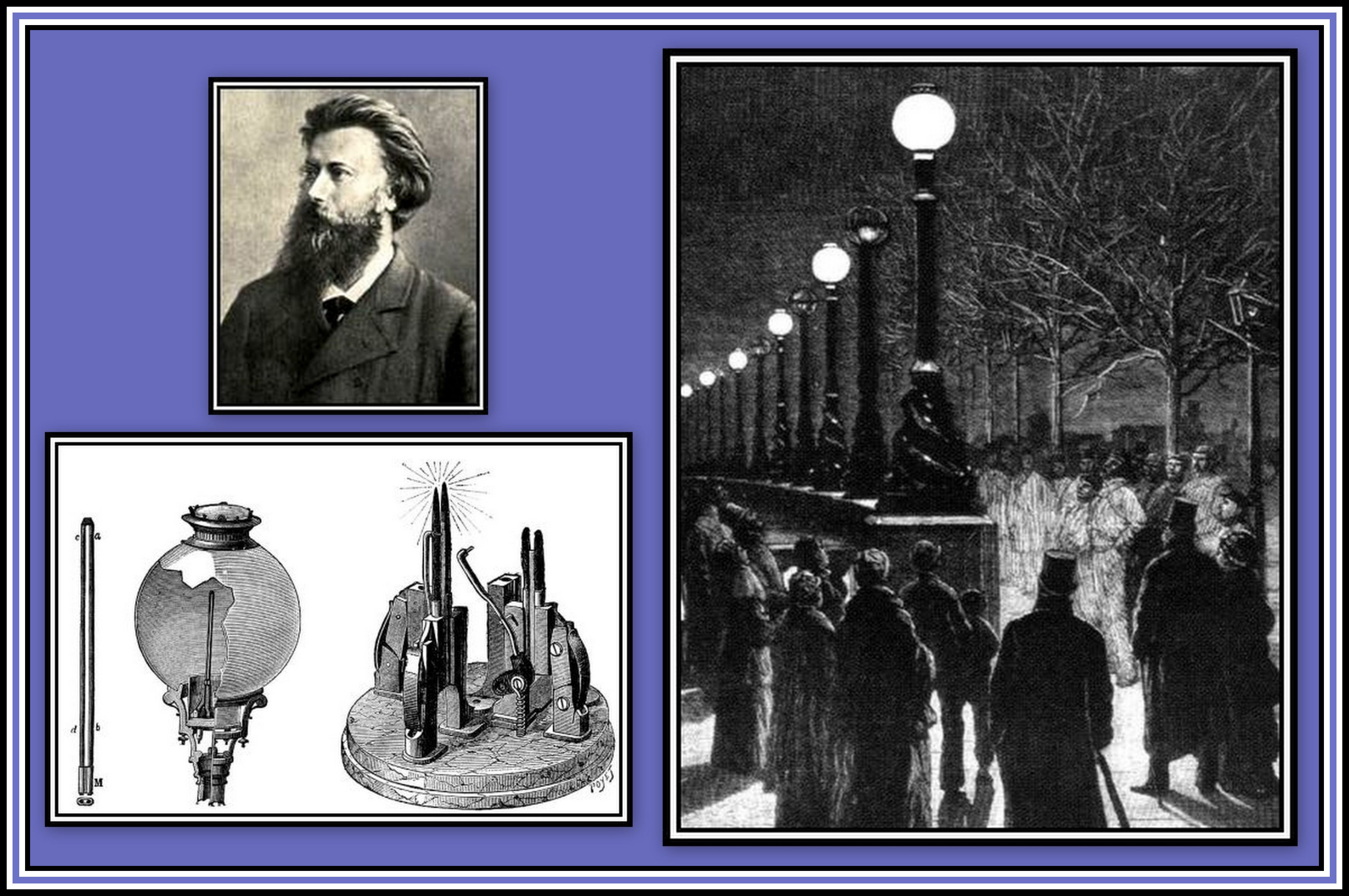 Top Left: Pavel Yablochkov (1847-1894); Bottom Left: drawing of details of the Yablochkov Candle; and Right: Victoria Embankment lit by Yablochkov Candles in 1878
Top Left: Pavel Yablochkov (1847-1894); Bottom Left: drawing of details of the Yablochkov Candle; and Right: Victoria Embankment lit by Yablochkov Candles in 1878
-oOo-
Since it completion, regions of the Thames Embankment have been reconstructed, as a result of bomb damage during the Second World War and from flooding in 1928.
-oOo-
Without doubt, a walk along the Thames Embankment allows one to appreciate a glorious spectacle since many of the great sights of London are to be seen along the way together with several areas of greenery, monuments and architecturally interesting buildings, as well as an opportunity to watch the activities on the River.
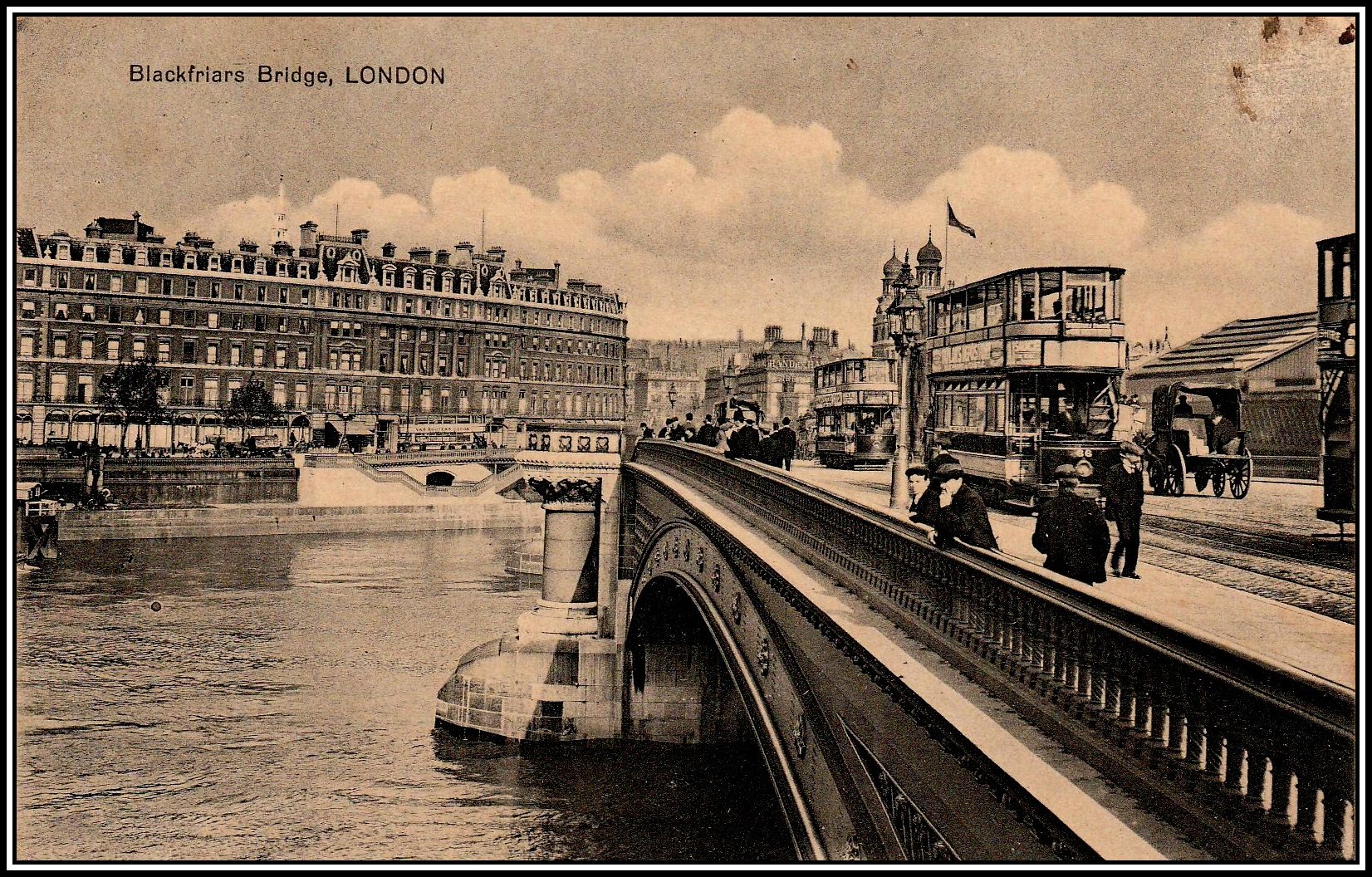 Blackfriars Bridge at the end of the Victoria Embankment
Blackfriars Bridge at the end of the Victoria Embankment
——oooOOOooo——
Click here to RETURN to POSTCARDS FROM OLD LONDON Home Page
——oooOOOooo——
Click here to go to FLOURS LUV’LY FLOURS
——oooOOOooo——
Click here to go to THE TELESCOPE MAN
——oooOOOooo——
Click here to go to BUSH HOUSE
——oooOOOooo——
Click here to RETURN to AN ADDITIONAL SET OF POSTCARDS OF OLD LONDON Home Page
——oooOOOooo——


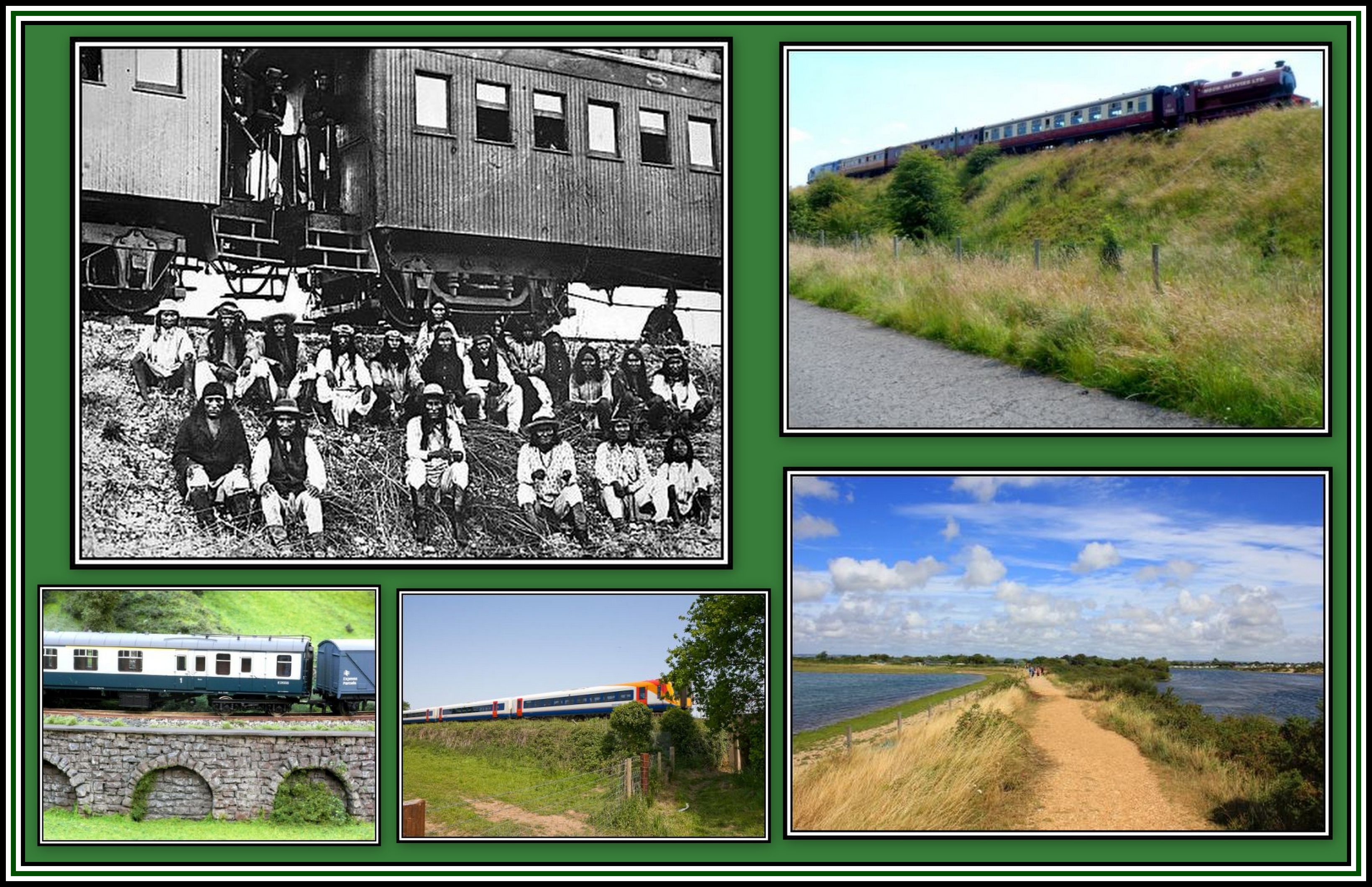
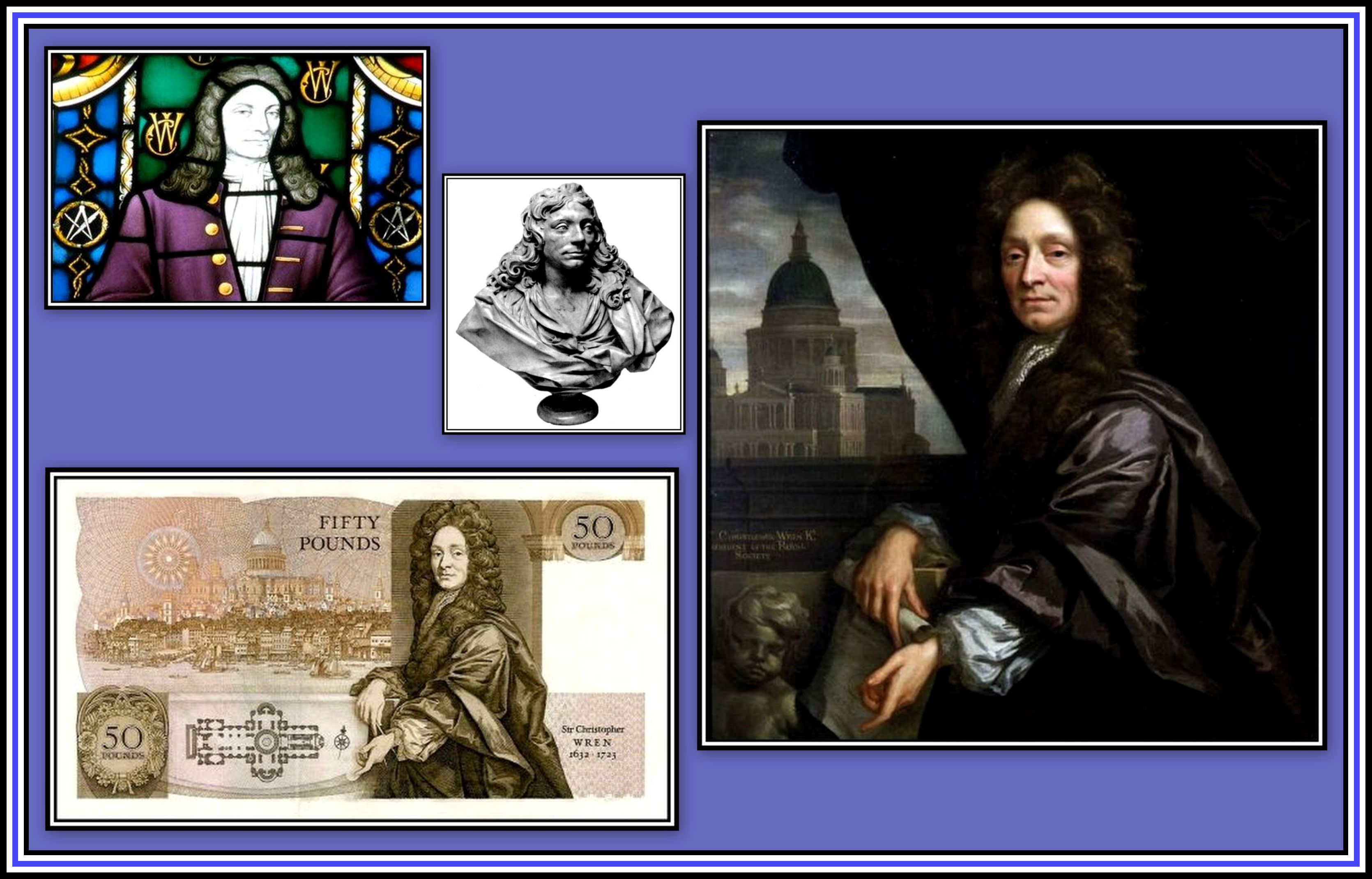
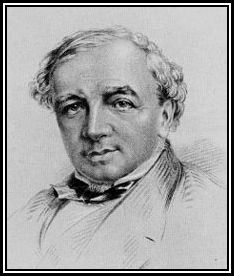
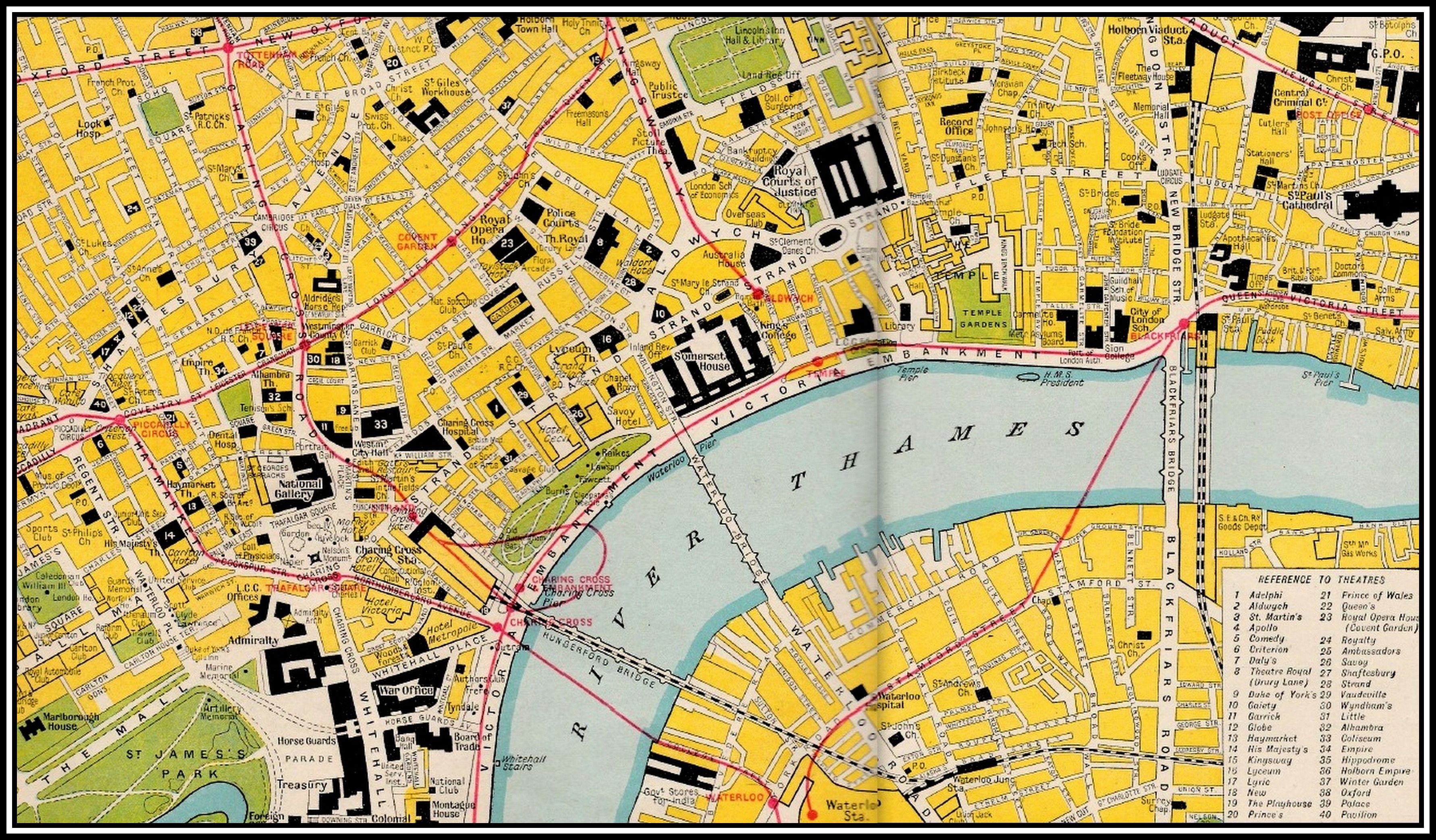
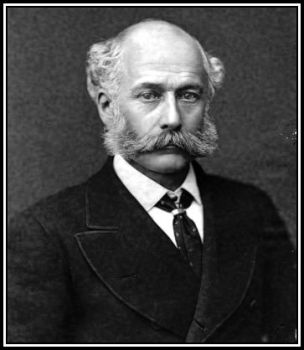
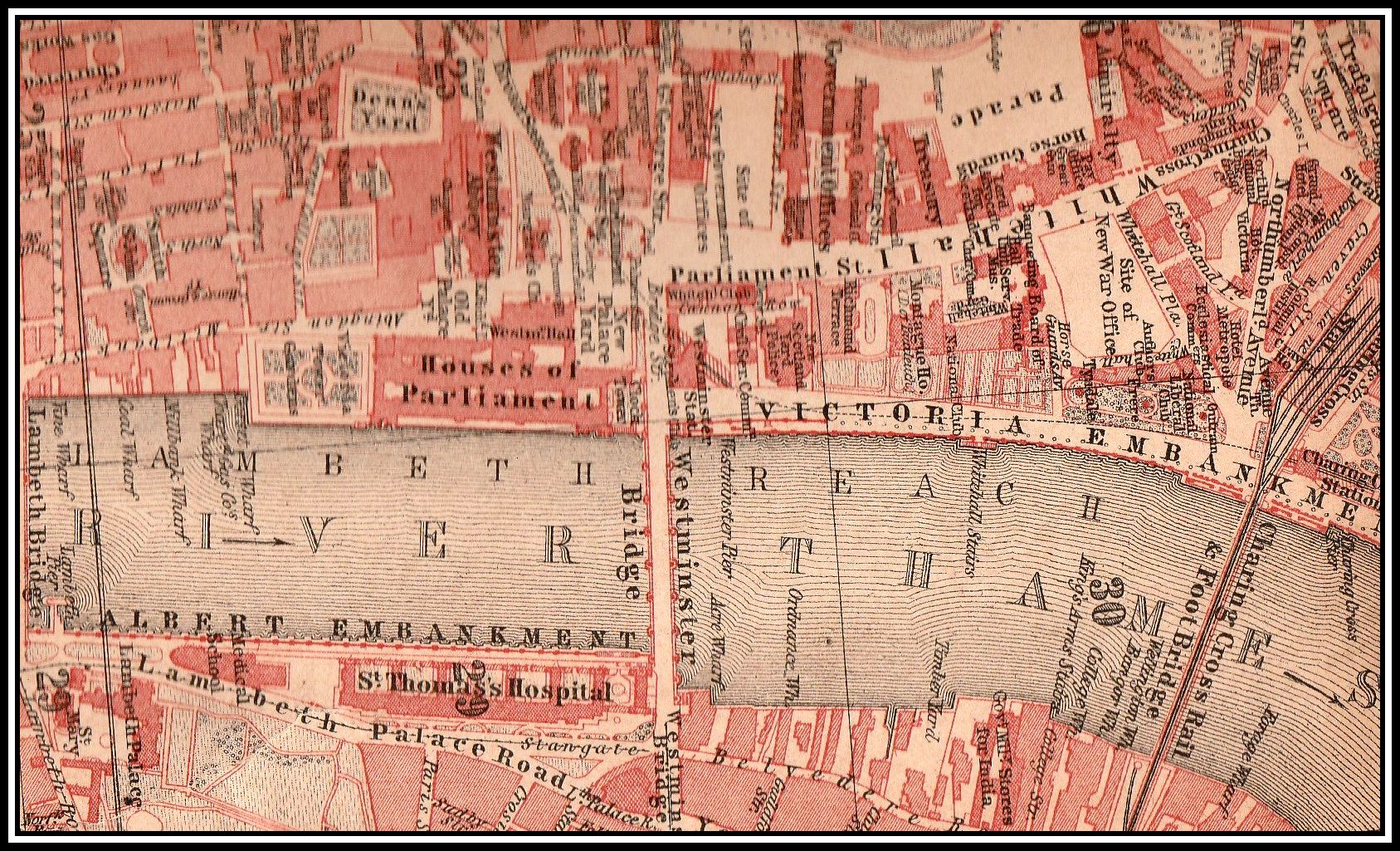
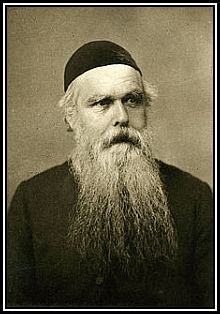
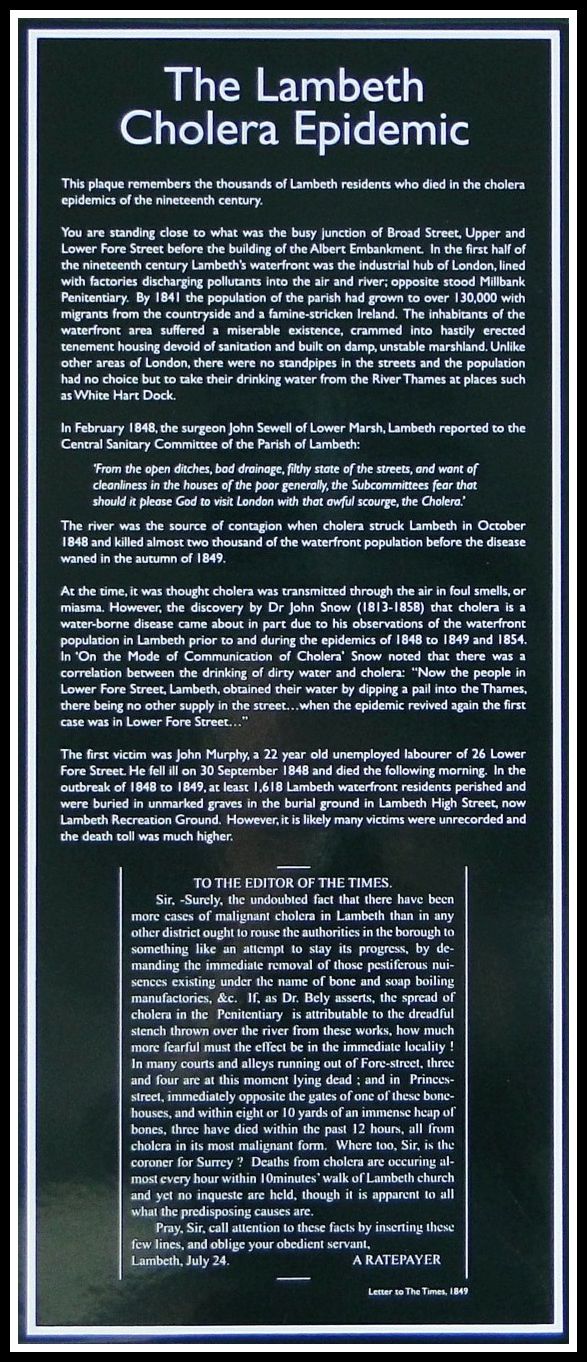 The Lambeth Plaque
The Lambeth Plaque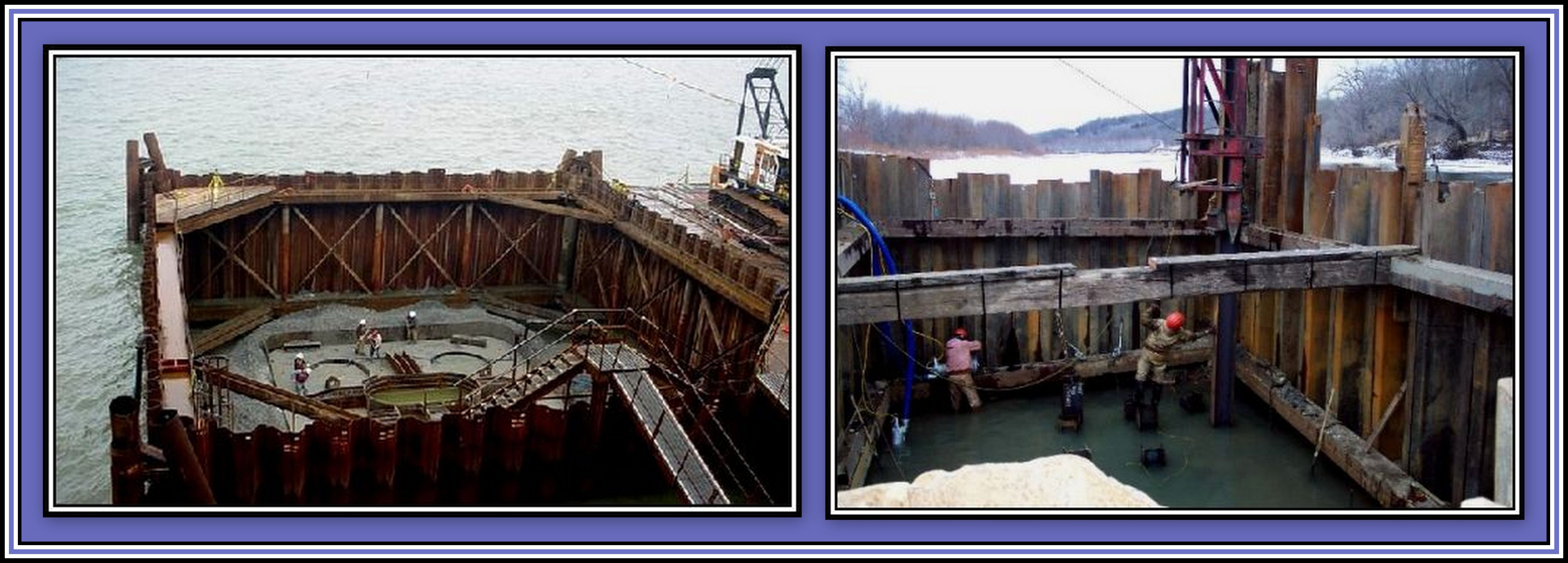
Finally got around to reading these new postcards and their stories. Very enjoyable as usual.
Ken
Excellent. Packed full of interest and history.
Good morning. I wonder if you could help me?
I am doing some research on Victoria Tower Gardens, Westminster, and I would be interested, if possible, to know the date of the map, shaded in red, you publish just beneath the picture of Sir Joseph Bazalgette.
Regards,
Patricia Stoughton